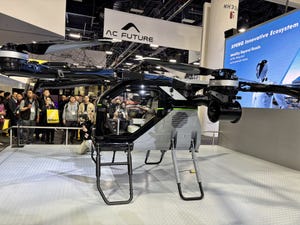Passengers Play Crucial Role in Assisting Drivers of Self-Driving Cars
The new study examined how a passenger impacts driving tasks in self-driving vehicles

A United Kingdom study has shown that the presence of another occupant can help a human driver when manual control is needed in a self-driving vehicle.
The report “How Will Drivers And Passengers Interact In Future Automated Vehicles?” was compiled for the U.K. transport research organization the RAC Foundation by the Human Factors Research Group at the University of Nottingham, and focused on cars with Level 3 Tech, as defined by the Society of Automotive Engineers.
This is considered conditional automation, where the car can take control in specific scenarios, but the driver must be prepared at all times to resume driving if required.
Level 3 has long been considered something of a problem in the auto industry, acting as a challenging middle ground between Level 2 – which needs constant driver inputs – and Level 4, where cars can essentially drive themselves in specific locations.
There is concern that Level 3 encourages drivers to lose too much focus when they should be concentrating.
Among the key questions the new study sought to answer were: “What impact does the presence of a passenger have on the driving task during periods of automation and also during the resumption of the driving task?” and “How does the presence of a passenger affect levels of situational awareness, workload, trust and acceptance?”
A total of 17 different driver/passenger pairings were observed in a simulator designed to represent cars fitted with Level 3 tech and a couple of key trends emerged.
First, the presence of a passenger can improve drivers’ focus on the road and help them decide when manual control is needed in self-driving vehicles.
And second, taking back control is still difficult.
The study showed that the occupants spent a lot of time chatting, and also sharing content on devices such as smartphones, which could be a potential distraction. However, the passengers were considered good moderators, encouraging drivers to keep an eye on the road even when not driving and preventing them from napping.
The researchers also noted that “vehicular control during the 10 seconds immediately after resuming manual driving was generally poor in the case of all participants”, with drivers “braking and accelerating erratically, and wavering in their lanes.”
In some cases, they said, these exaggerated inputs into the pedals and steering wheel might have been caused by the driver demonstrating to “their passenger that they were now in control.”
“Many motorists will be used to the unwanted contributions of a ‘backseat driver,’ but this research shows that when it comes to controlling a semi-autonomous car a front-seat passenger might genuinely help the person behind the wheel,” said Steve Gooding, director of the RAC Foundation.
Dr. David R. Large, senior research fellow at the Human Factors Research Group at the University of Nottingham, added: “The findings of this study will allow us to further explore the risks of conditional automation and how the technology of the vehicle can be improved to increase their safety on our roads.”
Level 3 tech is not yet widely available on production cars, with Mercedes the first to offer the tech in the U.S. on certain models in Nevada and California, having introduced it in Germany in 2022.
About the Author
You May Also Like








